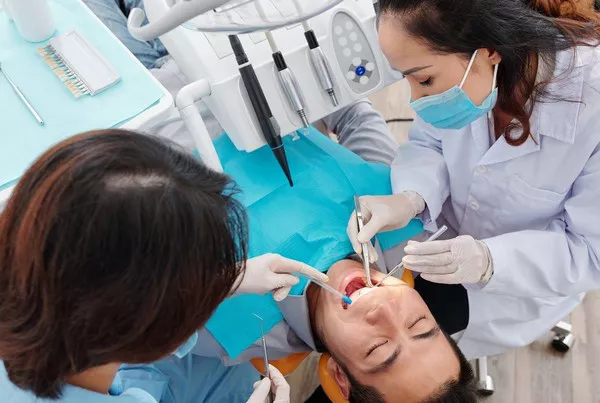Periodontal disease is a common condition that affects the gums and surrounding tissues of the teeth. It is caused by bacteria that accumulate in plaque and tartar, leading to inflammation and damage to the soft tissue and bone that support the teeth. If left untreated, periodontal disease can progress and ultimately result in tooth loss.
One of the most effective treatments for periodontal disease is deep cleaning, also known as scaling and root planing. This procedure involves removing plaque and tartar buildup from below the gumline and smoothing the root surfaces to prevent further bacterial growth. In this article, we will go over the various aspects of deep cleaning for periodontal disease, including its effectiveness, the procedure, and aftercare.
Effectiveness of Deep Cleaning for Periodontal Disease
Deep cleaning has been shown to be highly effective in treating periodontal disease. Studies have found that scaling and root planing can significantly reduce the amount of plaque and bacteria in the mouth, as well as improve the health of the gums and surrounding tissues.
However, it is important to note that deep cleaning alone may not be enough to completely cure periodontal disease. It is often used in conjunction with other treatments, such as antibiotics or surgery, to achieve the best results.
Procedure for Deep Cleaning
The deep cleaning procedure typically involves two parts: scaling and root planing. During scaling, your dentist or dental hygienist will use specialized tools to remove the buildup of plaque and tartar from below the gumline. This process may take several appointments depending on the severity of the condition.
After scaling, your dentist may recommend root planing, which involves smoothing the surface of the tooth roots to remove any rough spots where bacteria can easily accumulate. This helps to prevent future bacteria buildup and promote healing of the gums and surrounding tissues.
Aftercare for Deep Cleaning
Following a deep cleaning procedure, it is important to maintain good oral hygiene practices to prevent the recurrence of periodontal disease. This includes brushing twice a day with a fluoride toothpaste, flossing daily, and avoiding tobacco use.
Your dentist may also recommend using an antimicrobial mouthwash or other products to help reduce the amount of bacteria in your mouth. It is also important to attend regular dental checkups and cleanings to monitor the health of your gums and teeth.
Benefits of Deep Cleaning for Periodontal Disease
There are numerous benefits to receiving deep cleaning treatment for periodontal disease. These include:
- Reduced risk of tooth loss:
By removing the buildup of plaque and bacteria, deep cleaning can help to prevent the progression of periodontal disease and reduce the risk of tooth loss.
- Improved overall health:
Periodontal disease has been linked to several other health conditions, including heart disease, diabetes, and respiratory infections. By treating the disease, deep cleaning can help to improve overall health and wellbeing.
- Fresher breath:
Bacteria buildup is a common cause of bad breath. Deep cleaning can help to remove this buildup and promote fresher breath.
- Cost-effective:
Compared to other treatments for periodontal disease, such as surgery, deep cleaning is a relatively cost-effective option that can achieve significant results.
Conclusion
Deep cleaning is a highly effective treatment for periodontal disease that can help to improve the health of your gums and surrounding tissues. While it may not completely cure the condition on its own, it is often used in conjunction with other treatments to achieve the best results. If you are experiencing symptoms of periodontal disease, speak to your dentist about whether deep cleaning may be right for you. By taking steps to treat the condition early on, you can help to prevent further damage and ensure the long-term health of your gums and teeth.
Related Topics:






























